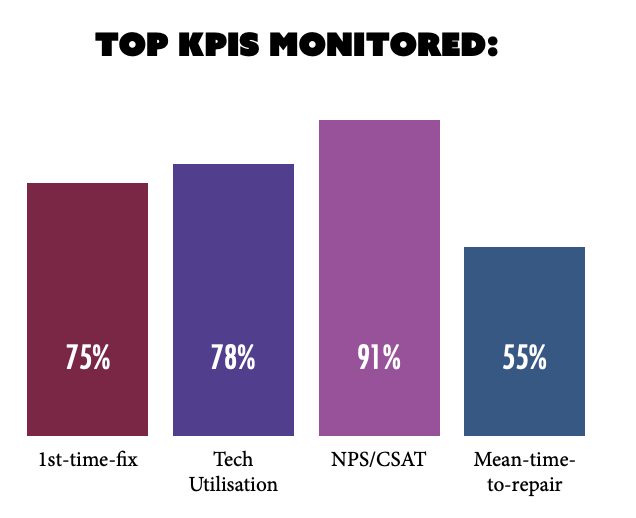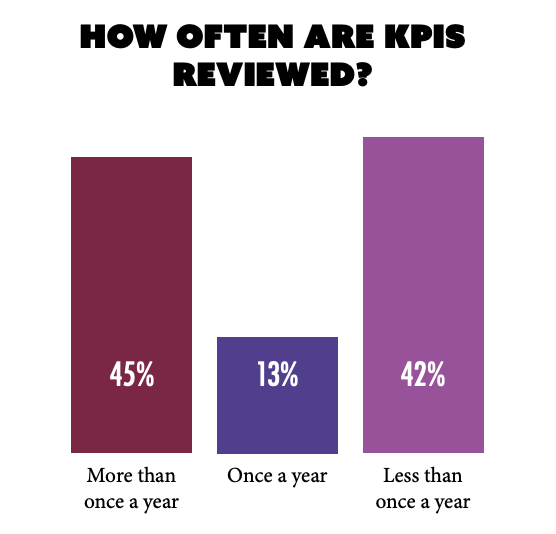A Complex, Yet Familiar Set of Field Service Metrics…
What is interesting is that while speaking to respondents and also looking at the original raw data of the online survey, we see that on the surface there seems to be a trend for increasing the number of KPIs being measured in total. Even when digging beneath the surface of the findings with follow up interviews as evidenced earlier, this shift to a more complex set of KPIs being required to measure success in a servitized and digitized world seems to be in line with consensus.
However, when we take a moment to step back from the data and the interview notes and look with a simplified yet robust model of analysis it is interesting to see that in fact, mainly the KPIs identified by respondents both in the online survey and follow up interviews as being critical to service operations, still all fit within three traditional areas of operational management.
These are:
- Task Completion
- Productivity
- Customer Satisfaction
We can go even further and add that within each of these categories can be found one of the three most widely cited fundamentally critical KPIs.
These would be:
- First-time-fix (cited by 75% of respondents)
- Tech Utilisation (cited by 78% of respondents)
- NPS or alternative CSAT metric (cited by 91% of respondents)
 So while over half (51%) of field service companies within our response set have made changes to the number of KPIs they measure, and whilst the introduction of digitalization and servitization can demonstrably be attributed to many of these changes, it would appear that the fundamental areas of field service operations that are being measured remain the same.
So while over half (51%) of field service companies within our response set have made changes to the number of KPIs they measure, and whilst the introduction of digitalization and servitization can demonstrably be attributed to many of these changes, it would appear that the fundamental areas of field service operations that are being measured remain the same.
As one respondent put it, “For us, there are perhaps three or four key areas that we monitor in terms of field service operations and these remain constant regardless of the introduction of new approaches to operations or the introduction of new technologies such as IoT which we are now using substantially.” “However, underneath each of these main areas of focus are several other KPIs that we measure and it is within these subsets of KPIs where we are seeing where we need to make changes to what metrics we are tracking.”
As we began the second phase of the research project and undertook further interviews with respondents, many of the trends that we had begun to see emerge became increasingly apparent. It was perhaps best outlined by one of the respondents whose business was currently running feasibility analysis on whether they could offer outcome-based solutions.
 “For us, the challenge is in what financial KPIs we should be putting forward as we have no existing data to base these on.”
“For us, the challenge is in what financial KPIs we should be putting forward as we have no existing data to base these on.”
“Our board is entirely behind a move towards such an offering. Still, the stumbling point so far for us with KPIs has been in what we should consider as successful in terms of revenue and of course at the end of the day for any business the ultimate KPI is the profit margin.”
“However, without previous numbers to benchmark against, and as the revenue streams are so different to our existing models, we decided that the best option in the initial phase of the project would be to measure the cost reduction of us moving from reactive to proactive service – so Technician Utilization, Travel Time and First-Time-Fix, which have always been important to us anyway, now become not only indicators of performance but also tools to validate the move to outcome-based services.”
“The intention is then to review and re-evaluate these metrics quarterly as the model matures within our business across the next three years.” It is a tricky conundrum that most field service companies that are seeking to embrace servitization will inevitably face. Yet as in this instance, perhaps it is the why and the how that must change, not necessarily the what.
Want to know more?
FSN PRO and FSN PRO+ users can find the full paper this article is taken from in the premium resource library.
Find out more about our premium membership options here















